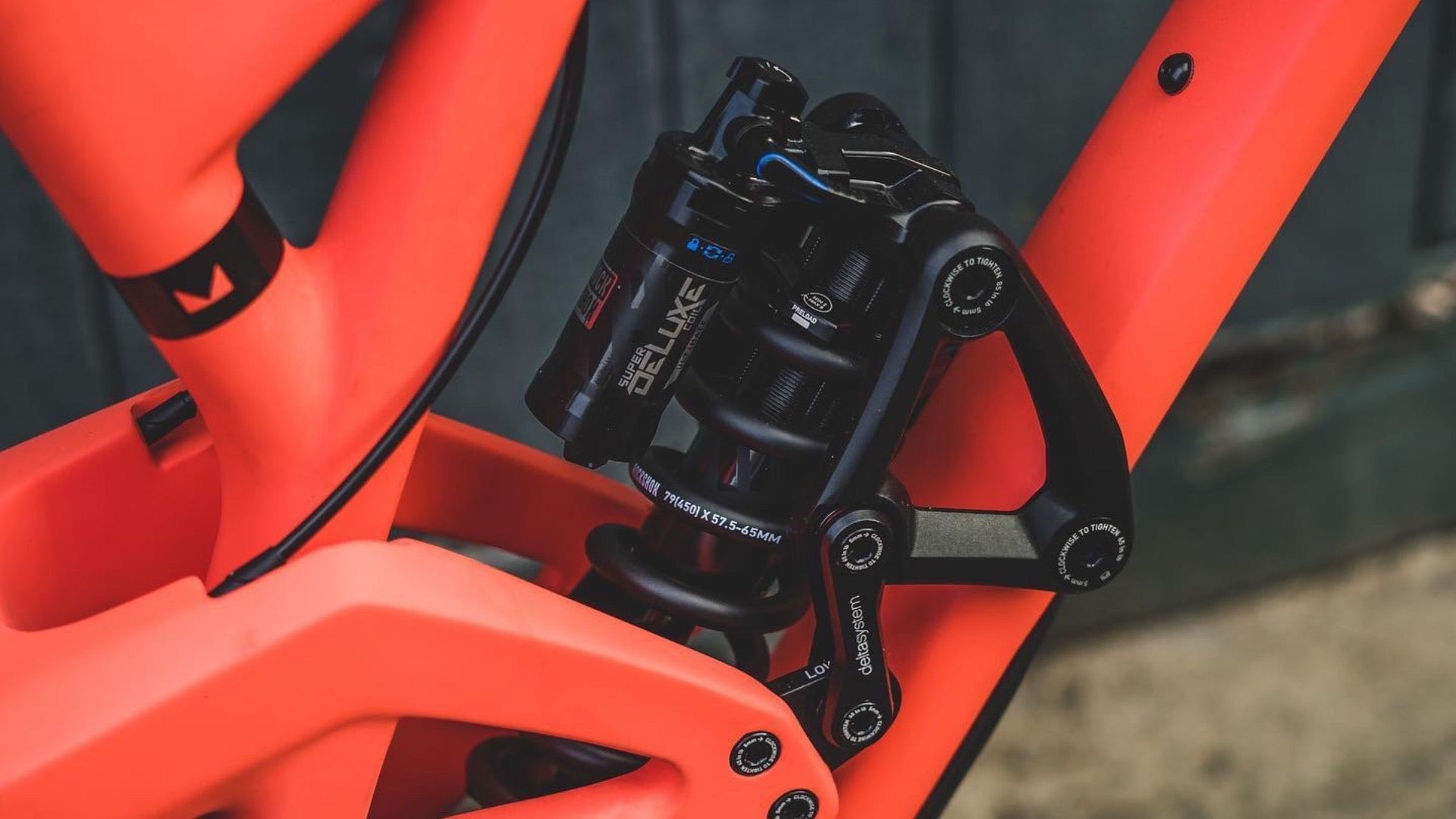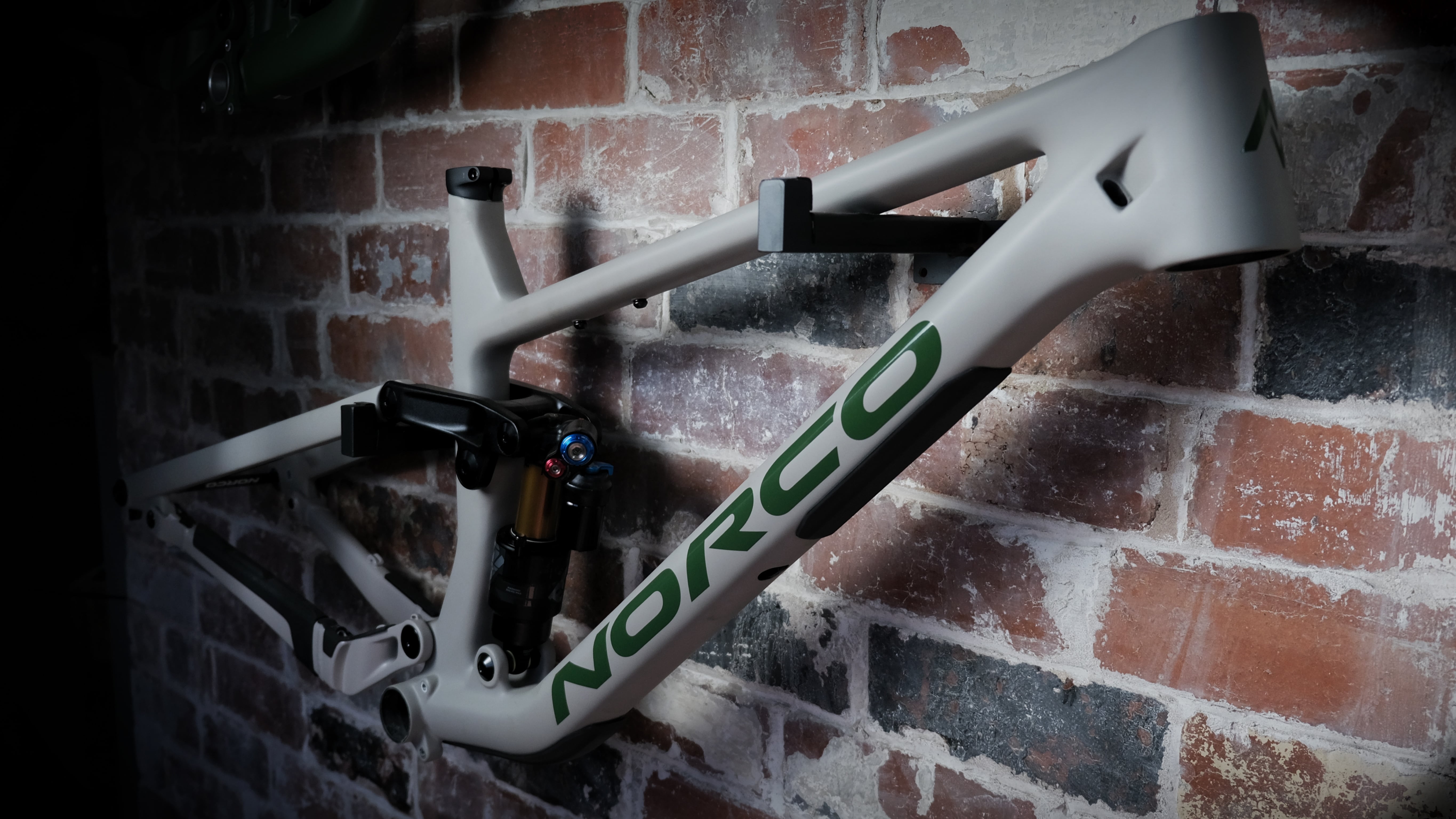How To Buy MTB Suspension: Forks
Why Upgrade Your Suspension Anyway?
Suspension is one of the most important parts of a mountain bike; it can make or break how confident you feel when riding and ultimately how fast you can go, because of this it's one of the most upgraded parts of a bike and rightly so.
But we have seen some drastic errors in our time, spending a lot of cash on something that doesn’t fit on your bike is a massive blow. So before you go out and spend your cash on those bargain forks have a read of this blog.
You can click on the above headings to take you to the section you want to read
Travel
First off lets talk about travel. This is how much the fork can compress and is usually measured in millimetres.
Your bike will have been designed around a specific travel fork and shock (if full suspension) Some bike manufacturers will say their bike can be used with more travel and will usually state that amount e.g can be used with a 150mm fork (I wouldn’t recommend going over the manufacturers recommendations).
What else should you consider if increasing you fork travel? by doing this it will effectively slacken your head tube but in turn this will also slacken the seat tube angle. Making the bike more stable downhill, but at the expense of the pedaling platform going up hill. Sometime this can be corrected with an angle head set which usually come in degrees so +/- 0.5 degree - +/- 2 degree.
The thing to remember with travel is that the more travel you have, doesn’t mean the better it will be. The bigger the suspension the less feedback you will generally get from a trail but the easier it is to plow over rough terrain, the shorter the travel the more poppy and playful it will feel but it will have its limitations. So it completely depends on what style of riding you are doing and how you want the bike to perform.
The short answer is that offset is the distance measured from the fork axle to the line running through the steering axis.
The bigger the offset number the shorter the trail and vice versa. But what does trail even do? Well the larger the trail figure the slower the steering, the wheel will feel closer to you making it feel less stable in high speed, straight line situations. But in those tight, twisty, tech sections it will be more manoeuvrable. So it depends on your riding style to what offset is right for you.
Your frame will have been designed with a specific trail and offset in mind. but if your someone that likes to play with the rules then offset is something you can play around with. One thing to note: dont buy too short an offset without knowing that the tyre wont hit your frame under full compression.
Steerer Tube

So you bagged yourself some top of the range forks second hand for a bargain. You go to put the forks in your bike and you don’t have enough space to fit your stem on? Oh no…this is one of the biggest mistakes we see when buying second hand forks.
The steerer tube has been cut to fit the original owners bike and your headtube is bigger meaning you would need a longer steerer.
This now renders your new forks redundant. You can get a new steerer tube pressed but it would cost a lot of cash. So the fork goes back on the market and you’re a disappointed rider.
Make sure the steerer is long enough before purchasing!
Next up straight or tapered stearer. Most modern bike frames have a tapered stearer tube which is 1.5” at the lower and 1-1/8” at the top. Some bikes have a straight stearer that is 1-1/8” from top to bottom. You can get adapters to convert from tapered to straight, this is usually used when putting downhill forks on a tapered headtube as downhill forks have a straight stearer. You cant generally go the other way as the lower of the actual headtube wont be big enough to fit a 1.5” lower headset cup.
Axle
Do you know your boost from non boost? Thru axle to QR? If not here is a quick overview
The first number in axle sizing relates to the length and the second number relates to the diameter of the skewer/axle
Some older/budget forks come with a quick release sometimes abbreviated to QR. These are 100m x 9mm

Next up is the non boost thru-axle which is either 100 x 15mm or 100 x 20mm with the 20mm version usually seen on downhill forks and some dirt jump forks.

Then finally we have boost thru-axle, which is 110 x 15mm or 110 x 20mm with the 20mm usually reserved again for downhill and DJ

None of the different sizes are cross compatible. With some hubs you can get end caps to make non boost-boost or some even QR. But these will never be as good as the correct size hub/fork combo. Generally the hubs that do offer this are fairly high-end hubs in the first place.
So make sure you know the size of your hub and that the forks you are looking at are compatible.
Wheel size

Different wheel sizes can affect the fork you need to purchase. If your bike has 29’ wheels you wont be able to fit a 27.5” specific fork to it. You can however fit a 27.5” wheel in a 29” Fork. Most of the time this is used to utilise the plus size tyres. A 27.5+ size wheel with tyre is actually the same diameter as a 29” wheel with tyre.
Adjustability
The lower range of forks will generally have less adjustability and therefor not perform as well in certain situations.
Budget forks may well come without an air spring, if you want a decent amount of performance these will not cut the mustard. They have a very basic spring inside the fork and no way of actually setting sag, rebound etc.
If you plan on doing anything more than canal riding then you definitely need something you can at least set SAG. For this you will need a fork that has an air spring.
Other things to consider would be rebound and compression. Rebound will control how fast the fork recovers after compressing while compression controls how fast the suspension can compresses. Both these settings are a big must for anyone wanting to get the most out of their suspension.
The Hierarchy would usually be:
Coil fork –pre load adjustment (eg SR Suntour XCE28 suitable for casual recreational use)
Coil fork – low speed rebound and lock out (eg Rockshox 30 silver suitable for casual trail riding)
Air fork –low speed rebound and lock out (eg Rockshox Judy Silver, suitable for casual trail riding)
Air fork – low speed rebound, low speed compression (eg Rockshox Recon Silver, suitable for intermediate trail riding)
Air fork – low speed rebound, low speed and high speed compression (eg Rockshox Lyrik ultimate, suitable for endure racing and trail riding)
Air fork – Low and high speed rebound, low and high speed compression (Eg Fox Factory 38s, suitable for enduro racing when the ultimate amount of adjustment is necessary.
Still not quite sure what all this mean? We have a handy guide on how to set suspension for beginners which gives a more in depths explanation of compression and rebound.
Disk Brake Mount

Disk mount types. Picture credit : Hope Technology
Forks these days will generally have a post mount to attach your brake caliper to. Some older forks did come with IS mount so be careful if upgrading old forks to newer verision, you may need new brake mounts.
Another thing to consider when buying new forks, each fork will have its own minimum rotor size, so if the minimum rotor size is 180mm you wont need a brake mount to fit a 180mm rotor. If you are upgrading or already have a 200mm rotor you will need a 20mm brake mount to accommodate for the larger size
Stanchion Thickness
Stanchion thickness can range from 30mm up to 40mm. Generally the thicker the stanchion the stiffer the fork. You would usually find a 40mm stanchion on downhill forks, but enduro riders are catching up with some single crown forks now coming with 38mm stanchions.
Thicker stanchions are great for hard hitting enduro riders and E-bike riders who also benefit from 38s due to the extra weight of the bike pushing against the forks. As with anything the thicker the fork the greater the weight penalty, so if you’re a cross country whippet you’ll probably benefit from a lighter fork with thinner stachions as the riding isn’t as hard on the forks and would benefit more from the lower weight
Air Spring v Coil


Its not that often you see a coil sprung fork these days as the adjustability of an airspring can outweigh the benefits of the small bump sensitivity of a coil fork. That is not to say coil forks are no good, they have their place, with many people opting for aftermarket coil conversions for their forks.
The benefits of a coil fork are its amazing small bump sensitivity, a linear spring rate curve (meaning the fork doesn’t get harder to compress throughout travel) Better traction due to freer moving parts due to less seals inside a coil fork adding friction.
The downside of coil is it usually weighs more than an airspring. You cant adjust sag on the fly as the spring rate determines your sag, meaning you would need to change the spring to change sag. The progressivity cant be changed like air can with volume spacers.
The benefits of air is mainly adjustability, the airspring can be adjusted on the fly with just a shock pump. Meaning you can run more or less sag depending on what you are riding. Its lighter than its coil brother. Progressivity can be adjusted using volume spacers.
The downside of air is that it is progressive, meaning as the air compresses the fork gets firmer. This can create a bouncy feeling. less sensitivity due to the air spring seal friction. Require more servicing and are more temperamental.
Ease of service

A coil fork is easier to service due to less amount of seals etc, lower leg services are generally fine to do by a home mechanic with a bit of knowledge. For anything more than a lower leg service I would recommend speaking to your local suspension service centre.
Final Words
Check all these areas are correct before making your purchase to ensure you dont make any mistakes. Other things to consider when buying second hand forks would be to check the condition of the stanchions themselves. You don't want any scratches on them as this will reduce the life of your seals and overall performance of the fork. It would be a good idea to ask for any proof of servicing so you can see when they were last done and if they have been looked after.
MEET THE AUTHOR
GAVIN RICHARDSON
Some say Gavin invented the wheel. They are lying of course, but he does build a mean set.
Chief of Cykel House, aging rider and father of 3. Gavin has been riding the majority of his life in multiple different forms. He created Cykel House out of passion and enthusiasm for the sport which cannot be matched.
Always on the hunt for the best products and latest trends his finger is right on the pulse.
Interesting fact - Gavin won a handwriting competition at age 7. What a legend.
Likes - A well built berm, beer and raw sprouts
Dislikes - Stainburn woods, headset cable routing and lycra

Related Post

How to Set Up MTB Suspension: A Beginner's Guide to Mastering Suspension Setup
Subscribe To Our Newsletter
The latest news, events and stories delivered right to your inbox




